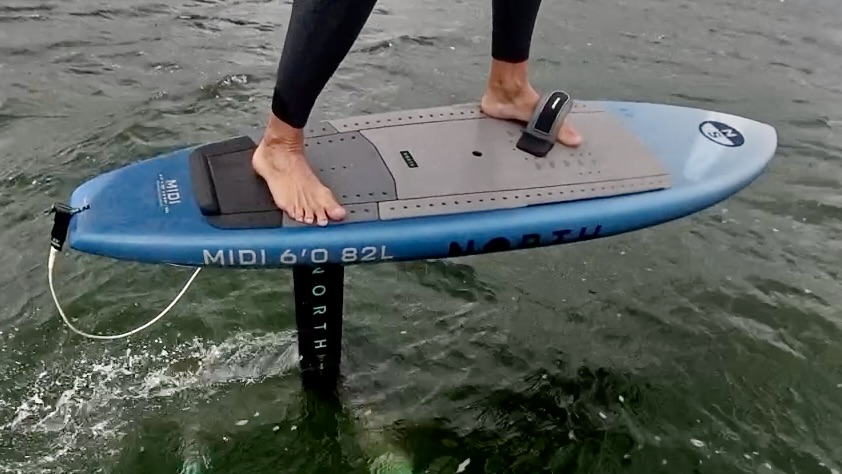Wing foil board in the mid-length class in a practical test – With the North Midi 2025, North – like many manufacturers – is launching a new foil board concept onto the market: a longer, slimmer wing board that is designed to enable early take-off and versatile use. We tested the North Midi Foilboard 6’0” (82 liters) extensively to find out how it performs on land and on the water. Our focus was on handling, material quality, areas of use (freeride, wave, downwind) and the target group. First of all: The Midi is clearly aimed at advanced riders – our test report clarifies whether it delivers what North promises.
On land
The mid-length design catches the eye as soon as you unpack it. At 6’0” (approx. 183 cm), the board is significantly longer than typical wingboards in the same volume class, but only around 20” (51 cm) wide – a narrow, surfboard-like silhouette. The shape looks elegantly stretched: Compared to many compact freeride boards, the Midi looks like a mini surfboard, which suggests a surfy riding experience. The workmanship makes a high-quality impression. North relies on a lightweight but robust full carbon/PVC sandwich construction with a reinforced foil mount. The board may not feel ultra-light, but it looks very solidly built. The weight is slightly above the average for comparable boards.
In the 6’0” size, the Midi offers 82 liters of volume. North covers a broad spectrum with the Midi series – from 5’0” (44 L) to 6’4” (96 L), a total of six sizes are available so that there is something for a wide range of rider weights and purposes. The smaller versions (e.g. 5’0″/44 L, 5’2″/52 L) are aimed more at very advanced wingfoilers or can be used as a crossover for prone-foilers. The larger models (up to 96 L) also appeal to heavier or less experienced riders who want to benefit from the more efficient shape without completely sacrificing volume. Our tested 6’0”/82 L model is in the upper midfield of the range – ideal for riders who are already confident on the foil and are now looking for a high-performance board that has enough volume for light winds but still remains lively and agile.
Features & details
The deck
The North Midi comes with well thought-out features. Despite the mid-length focus, North has not left out anything essential: There are numerous insert options for footstraps on deck – both centered and offset and also in a V-position at the front. So if you want to ride with straps, you’ll find the usual flexibility (straps are available as an option). The generous EVA deck pad covers almost the entire upper deck. At the edges of the pad, you can feel raised edges/strips that serve as tactile orientation points. These so-called “deckpad leverage rails” give the knees support when pumping and help the feet to find their position – small but clever details that really make a difference when riding and maneuvering. In the middle, a gentle center bulge (arch bar) runs lengthwise across the deck, which also benefits foot orientation and control. In addition, the board has an automatic pressure equalization valve already installed, so you don’t have to worry about temperature-related pressure reduction.
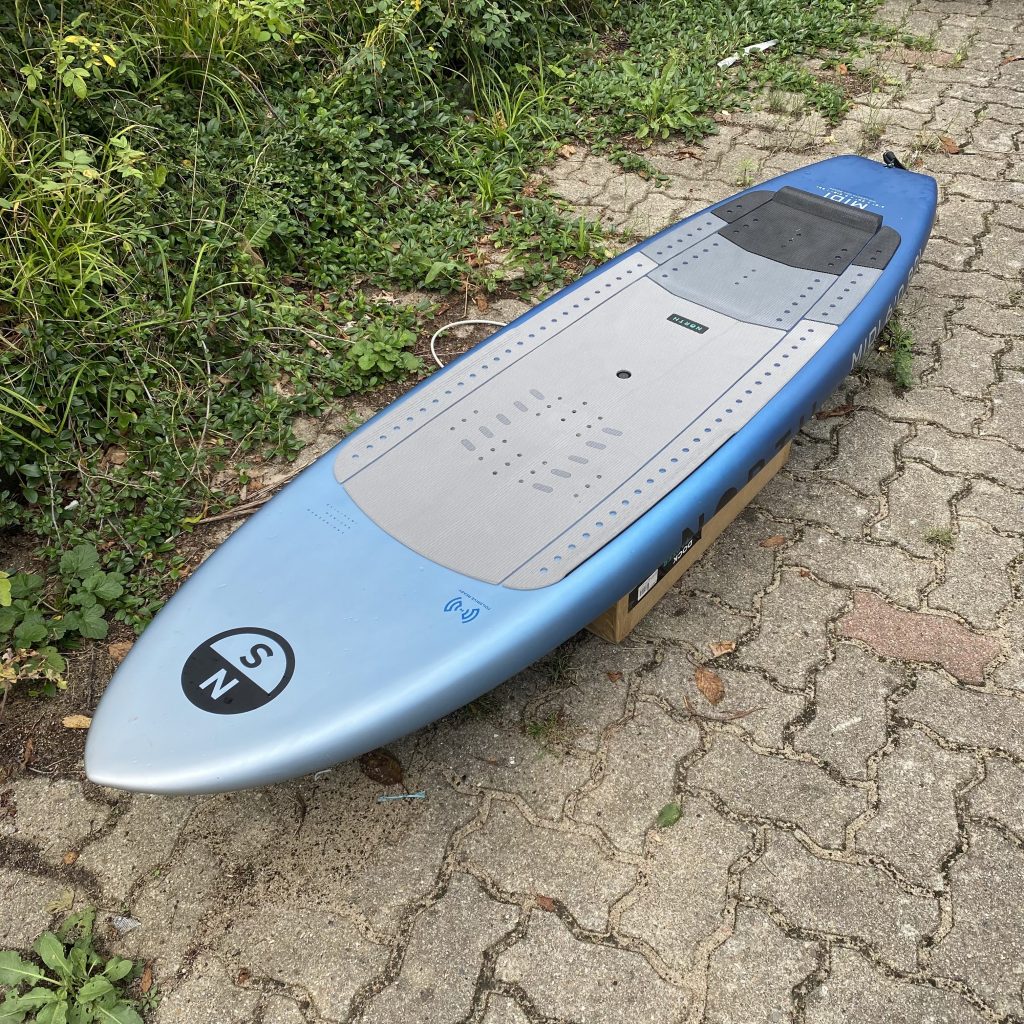
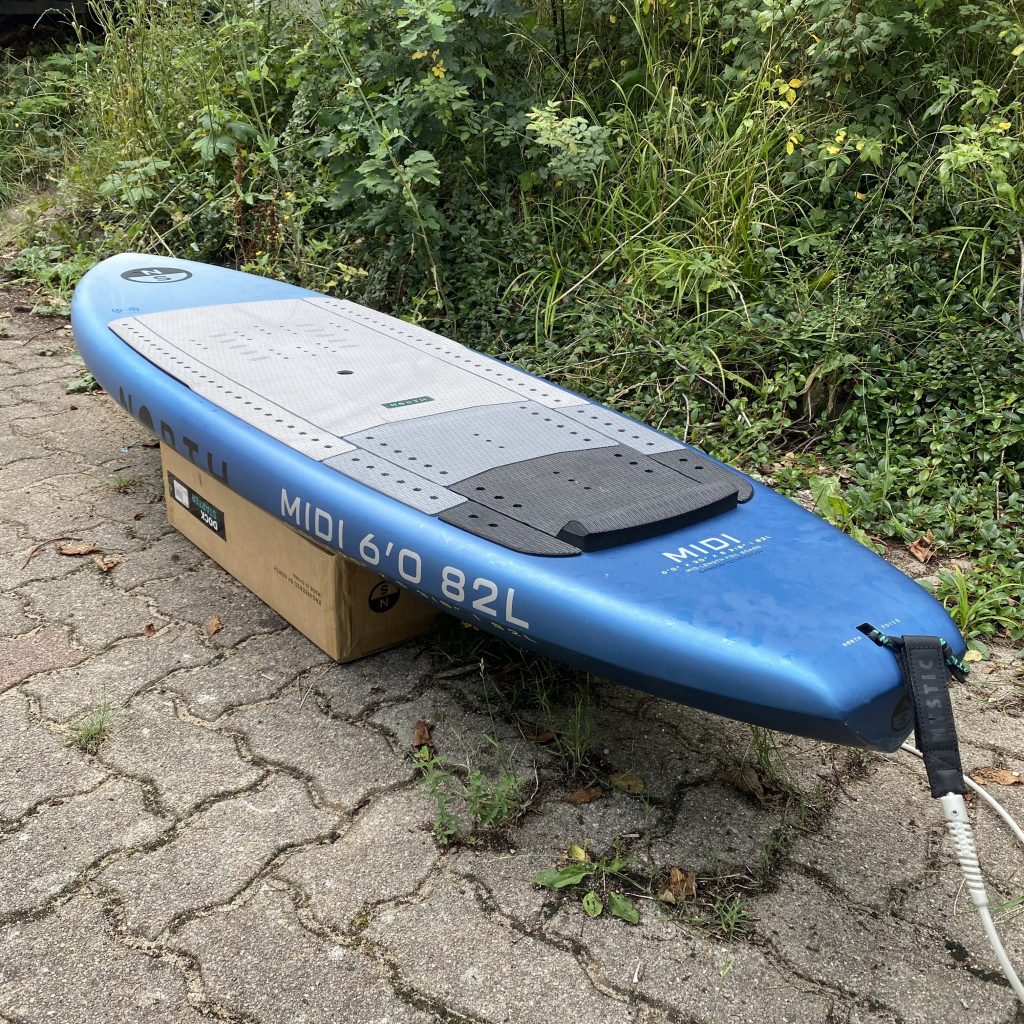
The underwater hull
The underside reveals a modern tri-plane underwater hull. In concrete terms, this means that the board has pronounced side chines (strongly beveled edges) and a flat middle section. The underwater hull narrows towards the stern. The edges are very steep, especially in the area of the foil box, so that the effective wetting surface in the water is minimal when planing. The idea behind this: Less drag, faster take-off and good-natured behavior during touchdowns. Thanks to the tri-plane hull, North promises a quick release when setting off and a gentle catch if the board ever touches the water. If you look at the Midi from the side, you can see a moderate rocker curve. The nose is relatively narrow and slightly upturned, with a subtle indentation (“hole”) underneath – a design inspired by downwind foil boards, which ensures that the tip glides cleanly out of the water and cuts through chop smoothly. The tail, on the other hand, is kept rather flat with only a little tail rocker to provide maximum propulsion when pumping. This mixture of a planing flat bottom and a slightly raised nose should make early foiling easier.
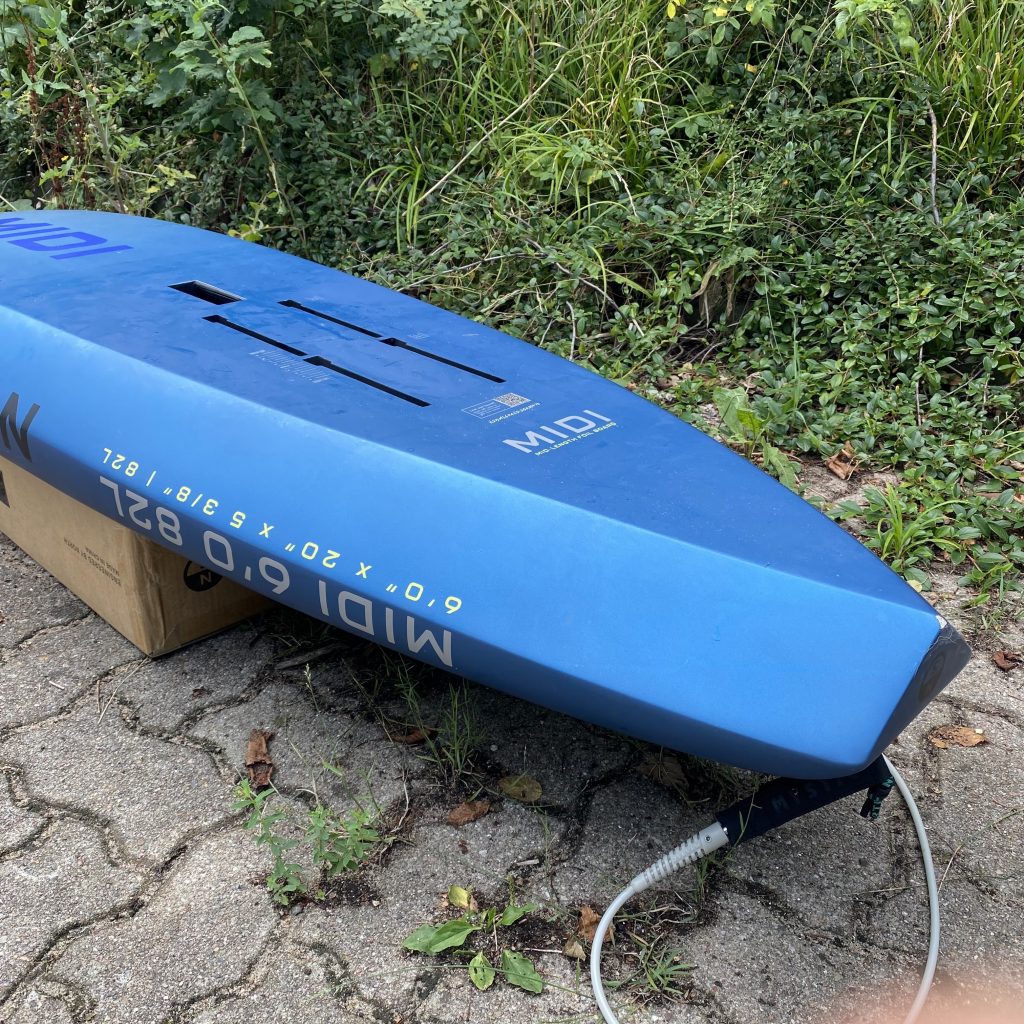
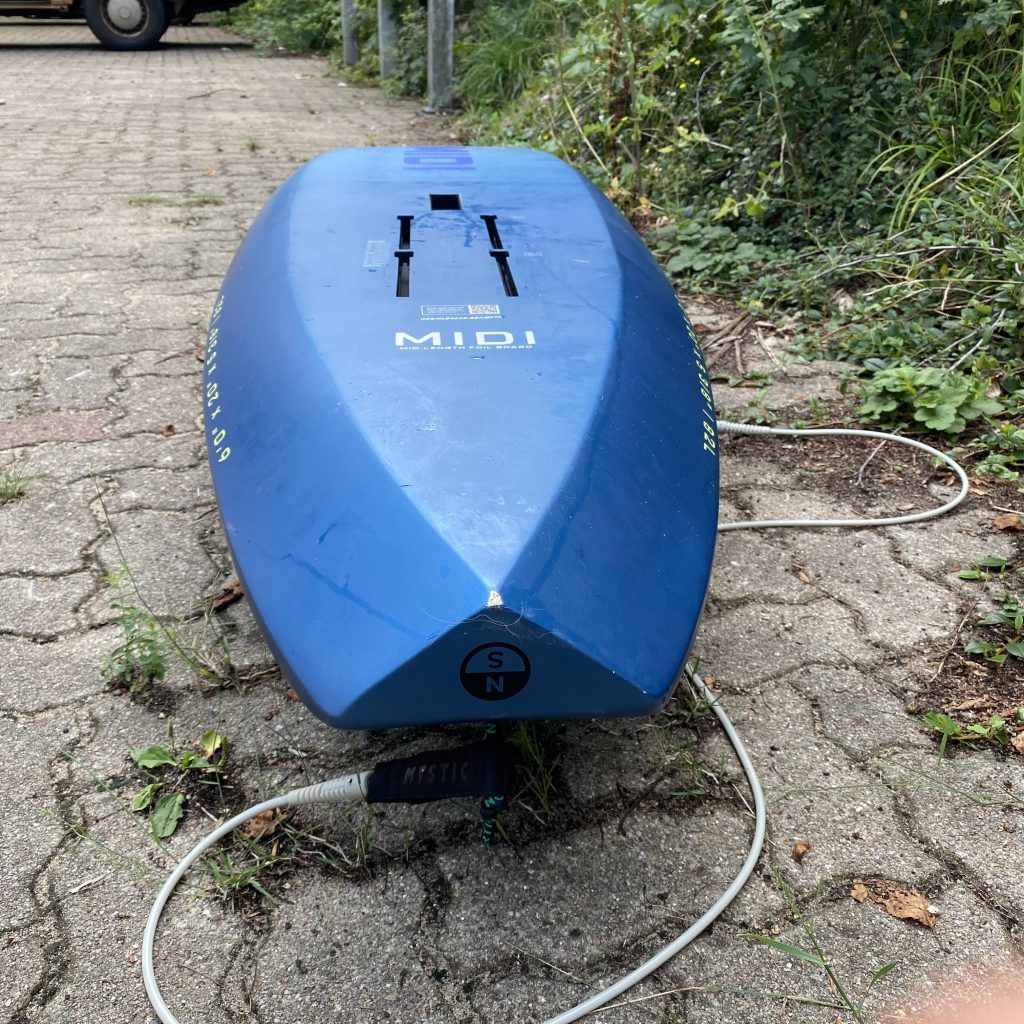

The recessed carrying handle on the underside is practical and almost indispensable for a board of this size. Despite (or perhaps because of) its slim width, the Midi is quite thick (in our case ~13.7 cm at its thickest point), which makes it difficult to tuck it under your arm with one hand. The integrated handle is therefore an important detail. It sits comfortably in the hand and helps enormously to carry the board safely to the water even in gusts of wind. Overall, the Midi 6’0” leaves a very well thought-out impression on land: high-quality materials, clean workmanship, with a focus on performance details. Last but not least, it is “foildrive ready”, which means that the radio signal goes through the board. We ourselves have already experienced that the signal for the e-foil breaks off on full carbon boards.
Target group
Otherwise, it becomes clear as soon as you try it out on land that stability when standing is not its main focus – balancing on the narrow board takes some getting used to. North itself recommends the Midi for intermediate to expert riders. We can confirm this assessment: It is definitely not suitable for inexperienced beginners. Anyone picking up a wingboard for the first time will be overwhelmed by the Midi’s wobbly base. Advanced foilers, on the other hand, will be curious to see what this mid-length machine has to offer on the water!
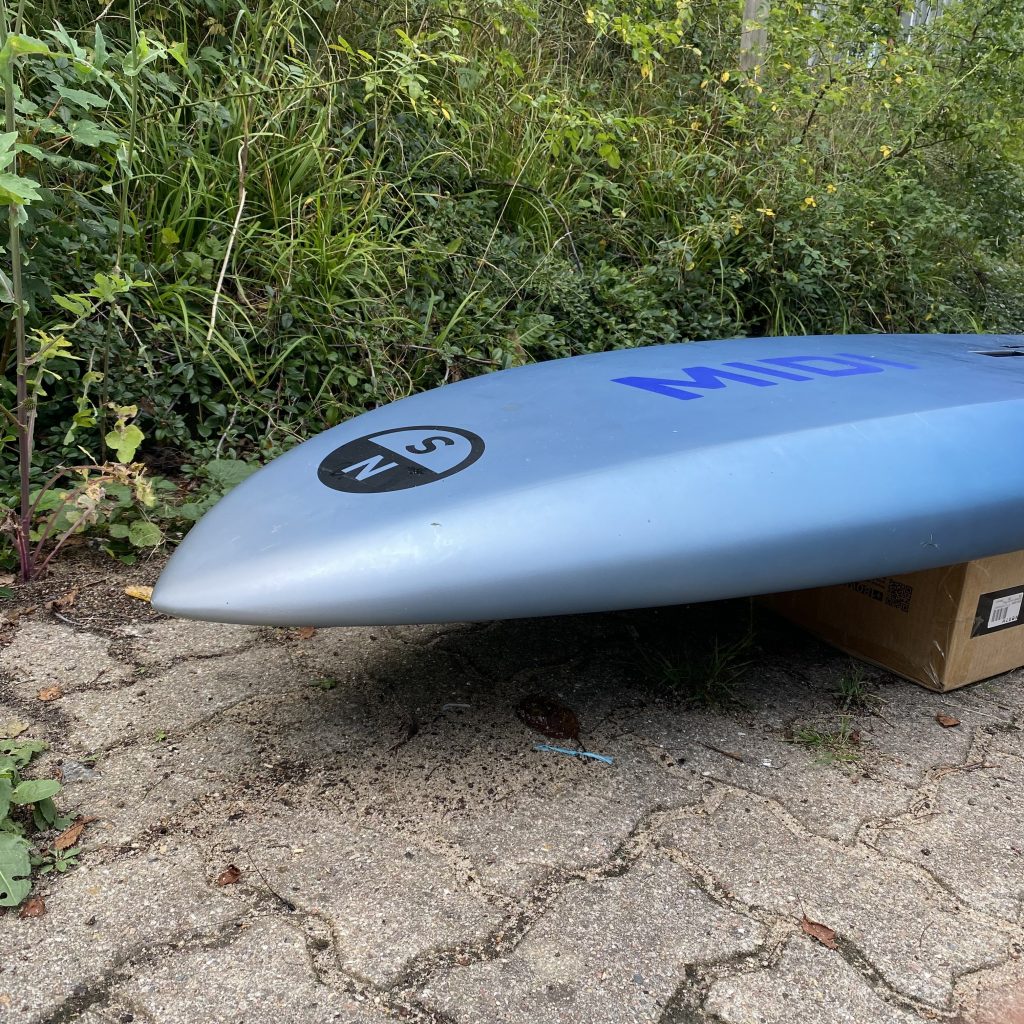
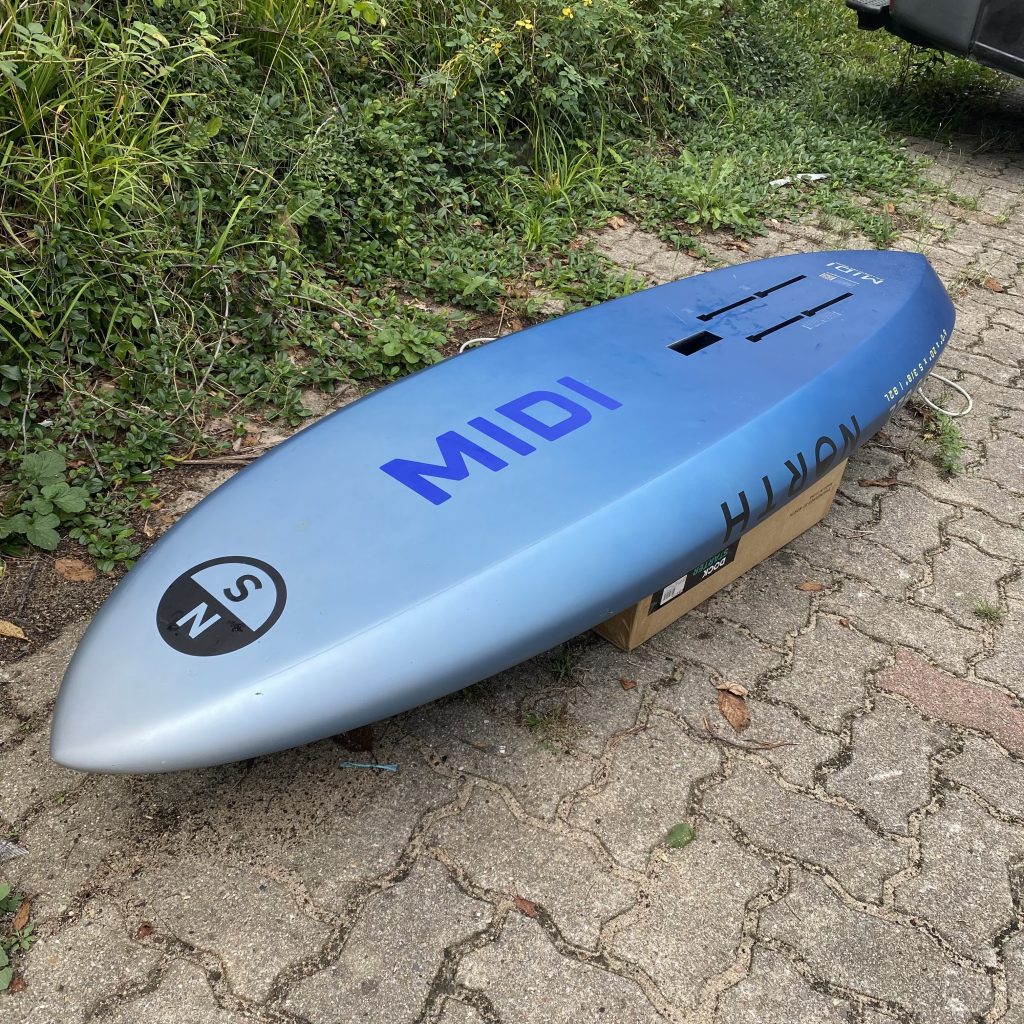
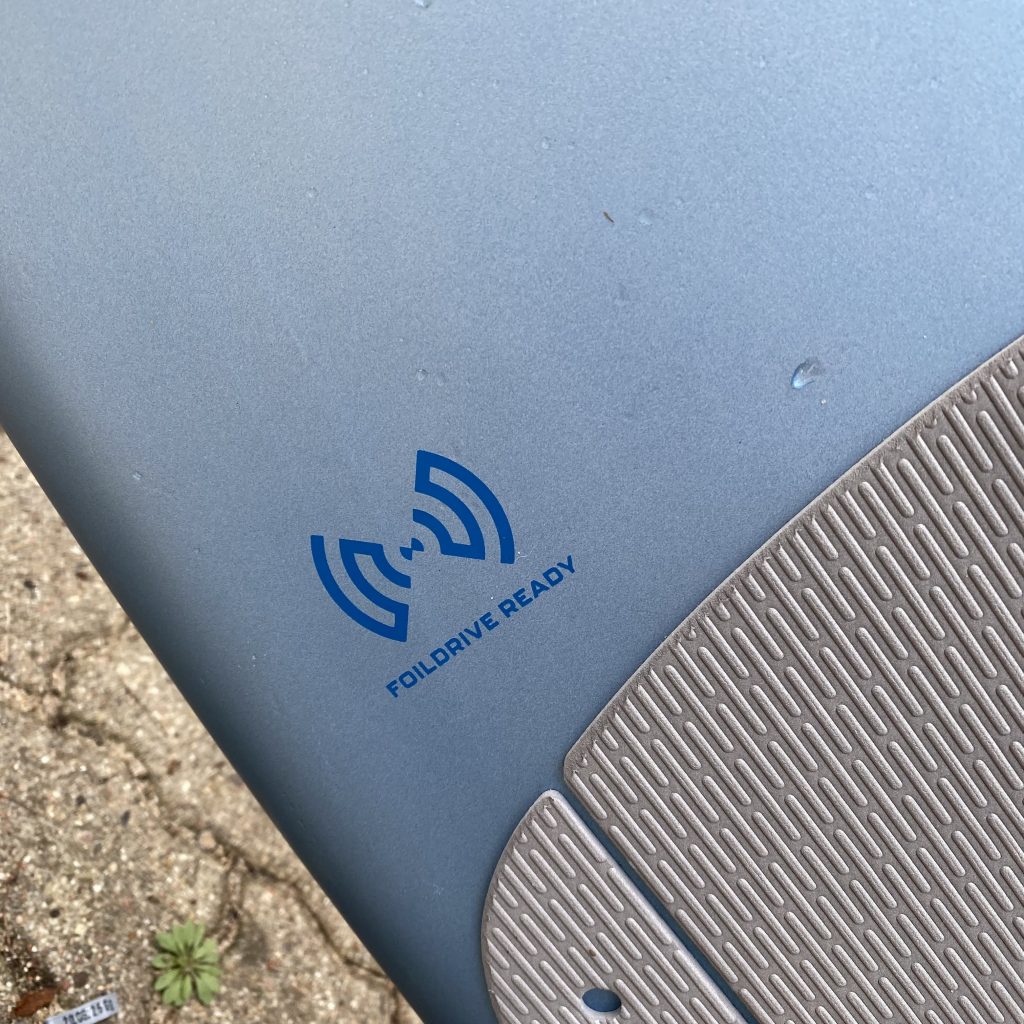
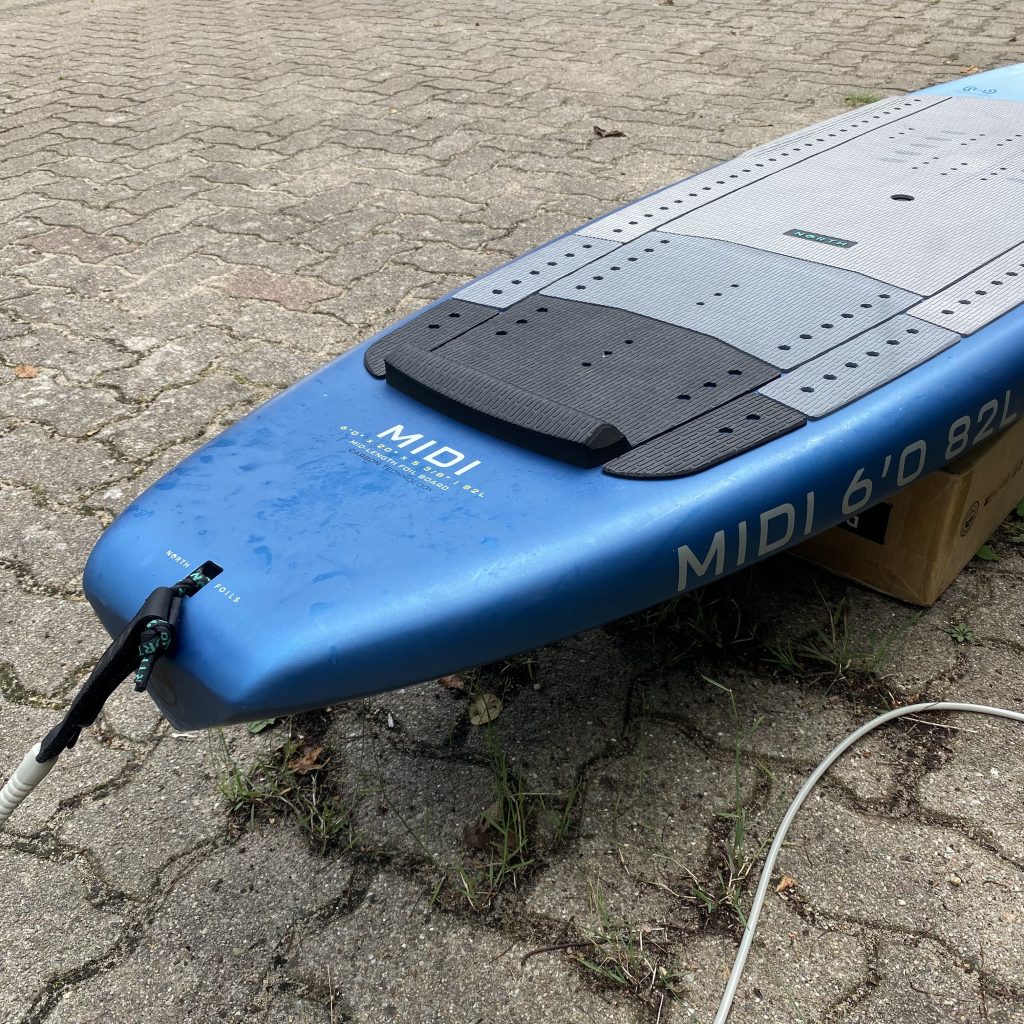
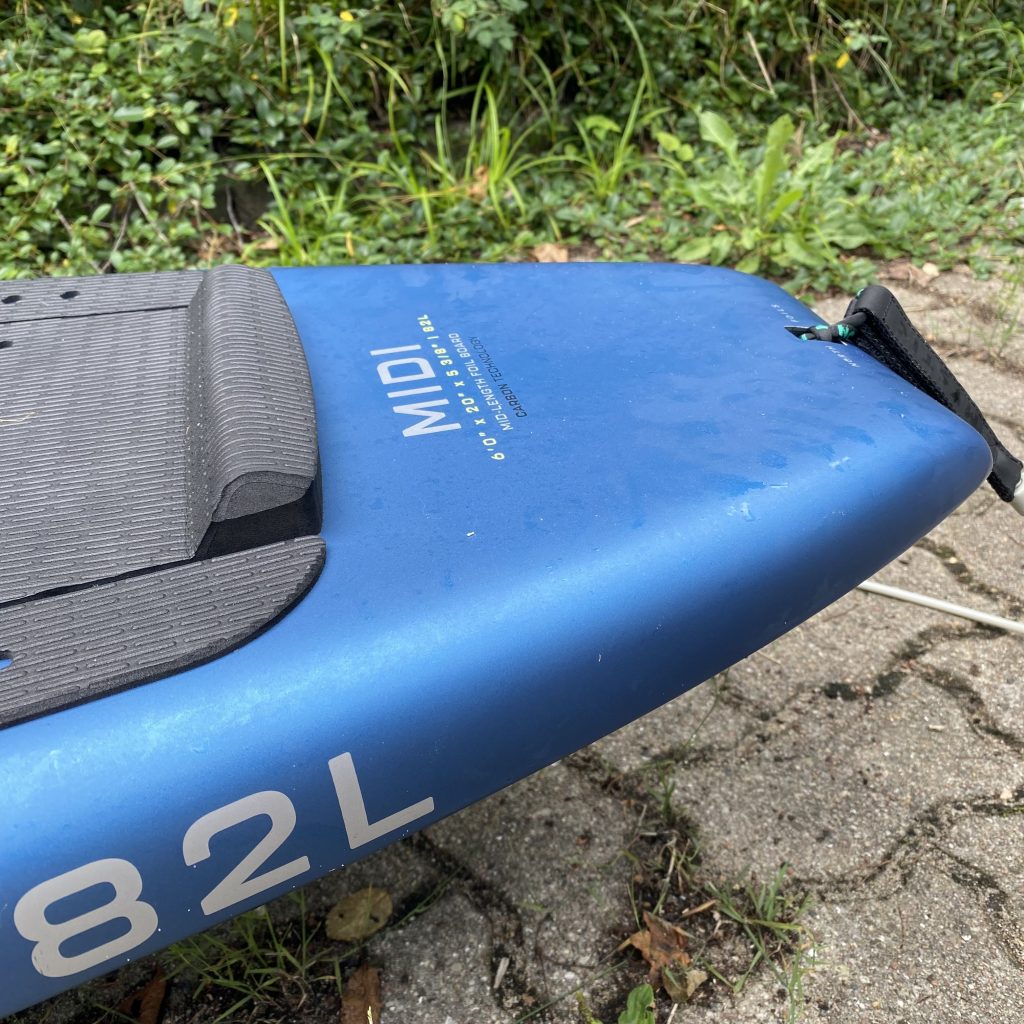
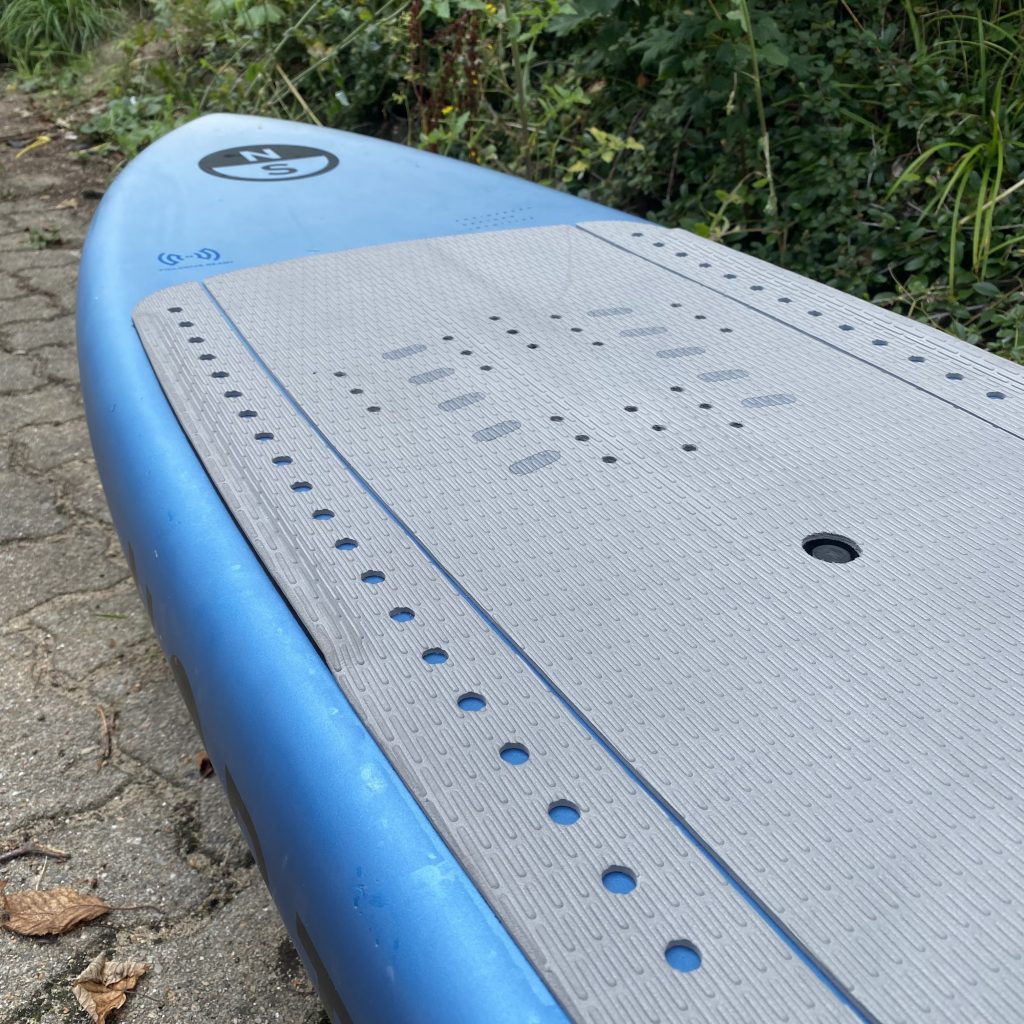
On the water
So how does the North Midi 6’0” perform in practice? First of all, probably the most exciting question: How quickly can you start foiling with it? Thanks to the long, slim shape, the answer is: very quickly. As soon as you have made a few paddle or wing strokes and pick up speed, you can feel the low water friction – the board accelerates quickly. Compared to wider boards of the same size, the Midi actually needs less power to get up to speed. Even with surprisingly little wind, it planes. At around 12 knots and a 5.5 m2 wing, taking off was child’s play – at least in conjunction with a slightly more active riding technique – a few powerful pumping movements with the wing and foil, and the Midi literally shoots onto the foil. At the same time, the board remained easy to control even in strong winds with gusts of up to 30 knots and we didn’t feel that the board offered too much wind attack surface.
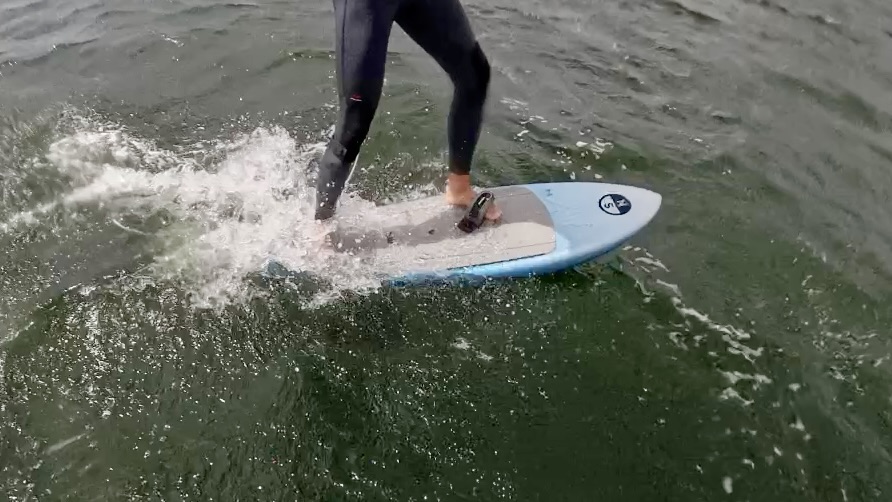
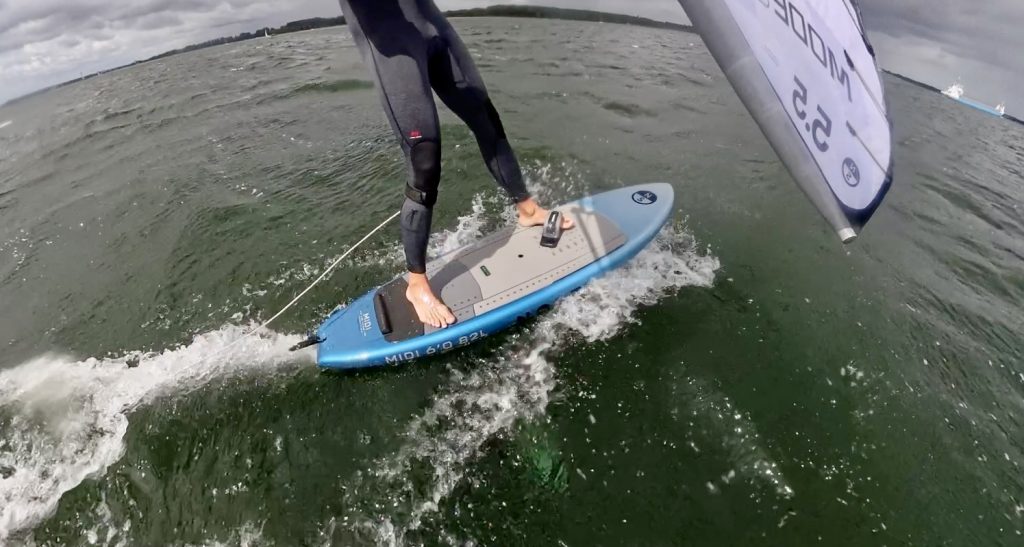
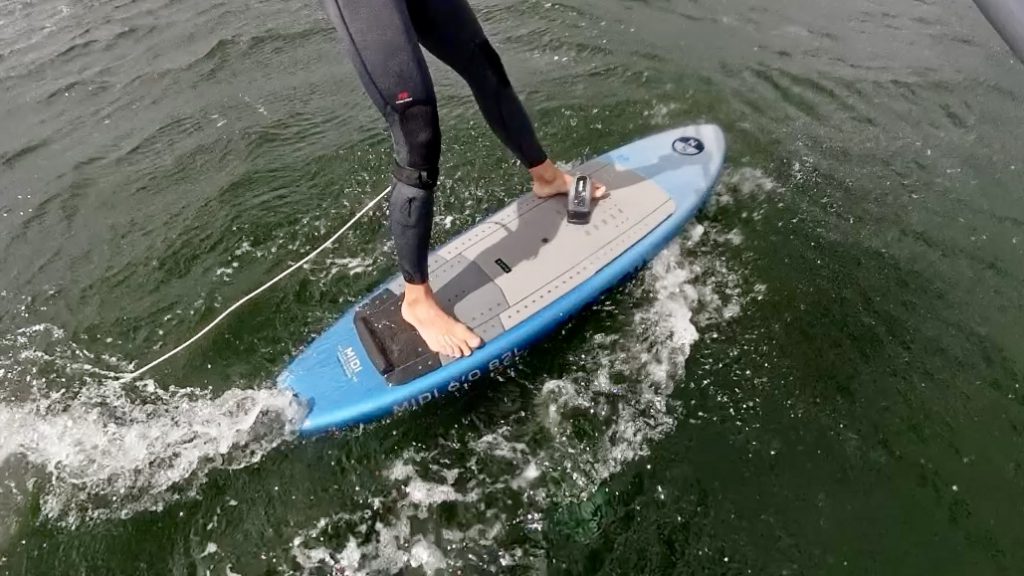
Nevertheless, the Midi is not a light wind miracle in the passive sense. Anyone hoping to simply stand around on it without pumping until it foils will be disappointed. The narrow footprint requires balance and clean technique even in light winds. Compared to some wider Lightwind boards, the Midi feels much more nervous before take-off. Incidentally, this is one of the reasons why we added a foot strap to the front, as you can see in the picture. This made the board much easier to control and promptly rewarded us with an early take-off. Wider shapes are recommended for absolute low-wind beginners. Advanced riders can actually extend their light wind range with the Midi, as it glides efficiently and therefore manages with a smaller wing size or a smaller foil where you would otherwise need more surface area. The motto is: ride actively. If you do, you will notice that the board offers hardly any resistance and is lightning fast on the foil.
Once in the air, the North Midi shows its full potential. The ride is surprisingly agile and loose for a 6-foot board. In fact, it seems much smaller than its dimensions suggest. The board reacts quickly to weight shifts, tilts quickly onto its side and can be turned more tightly than a wider board of the same length. In the waves, the Midi is therefore completely in its element. The longer nose and surf-inspired shape enable smooth planing performance along the waves. You can really ride the board on the edge – thanks to the steep chines, nothing gets stuck: Even in hard turns, the rails don’t dig in, instead the Midi stays free and carves through with confidence. This gives you a lot of confidence when riding cutbacks or turns in the waves. The surfy characteristics are really fun – you quickly forget that you’re standing on a 6’0” board.
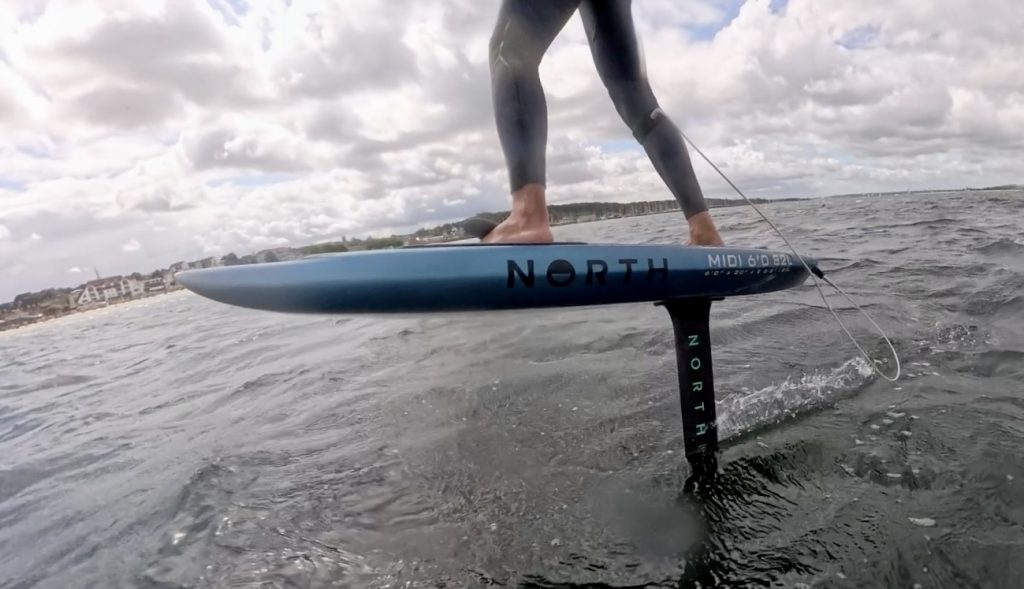
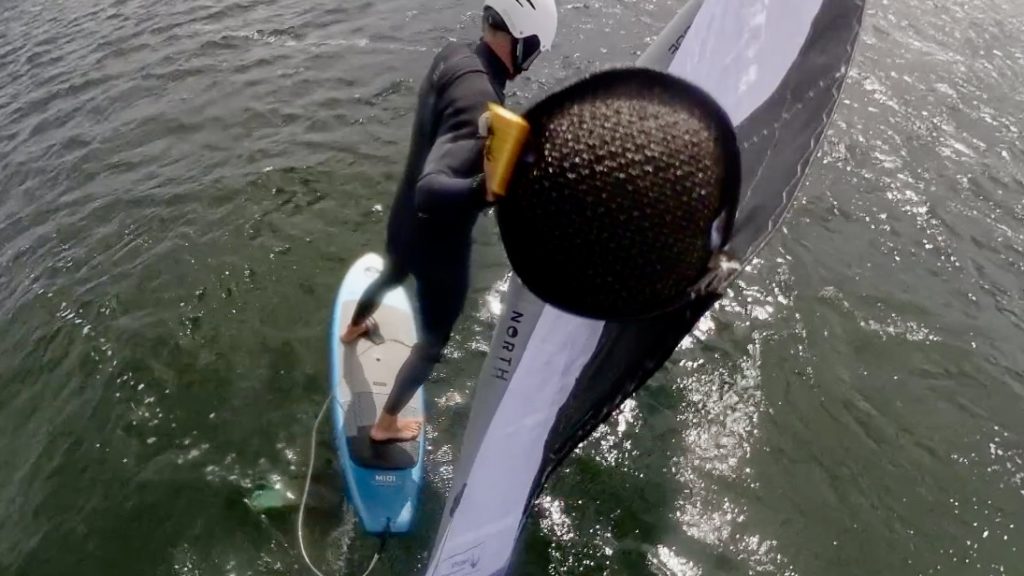
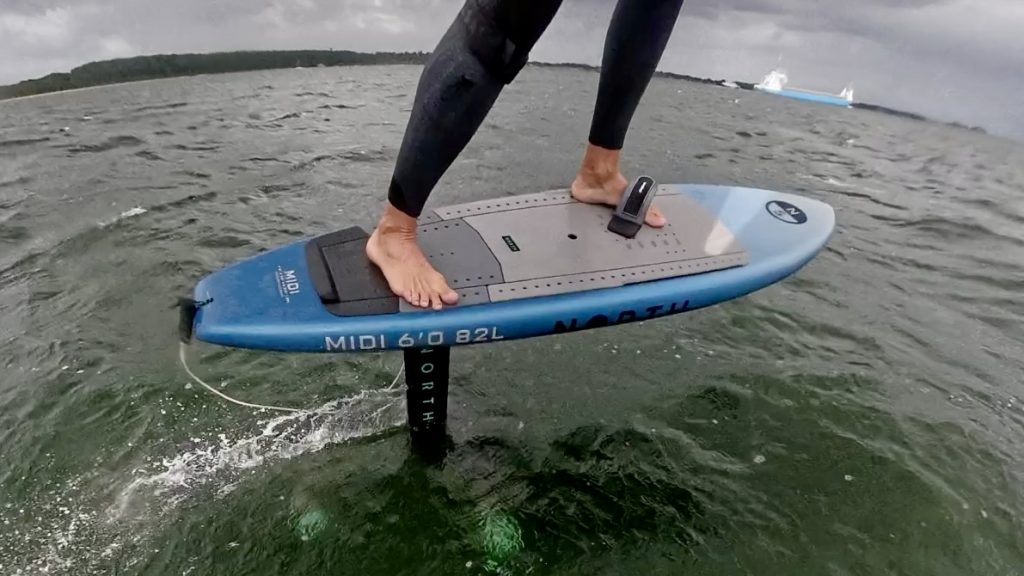
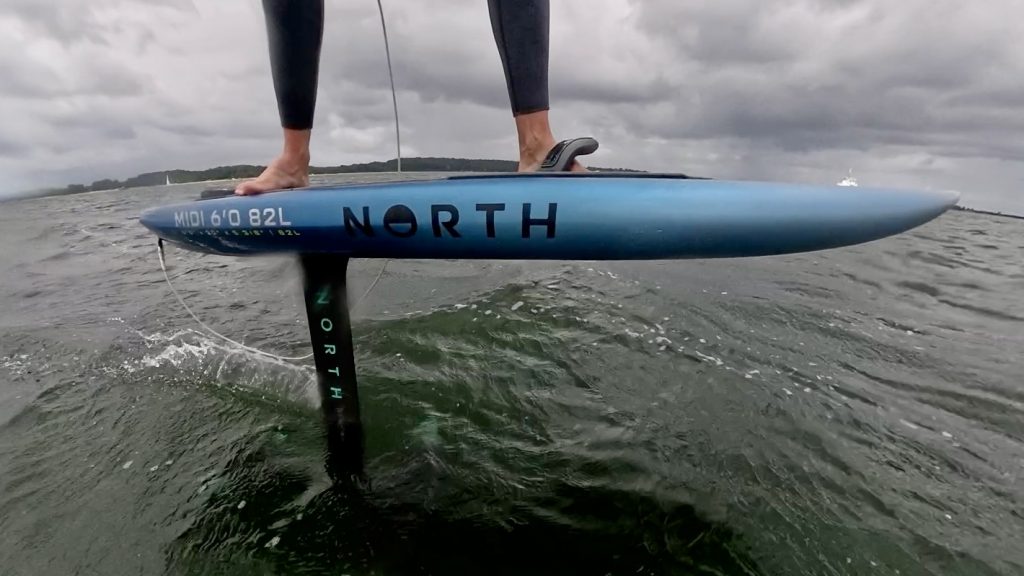
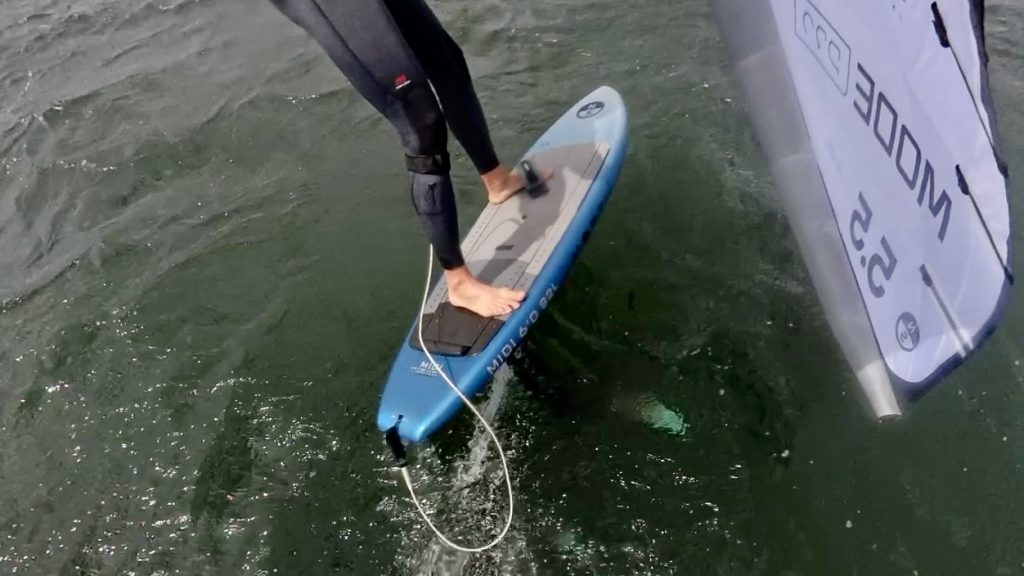
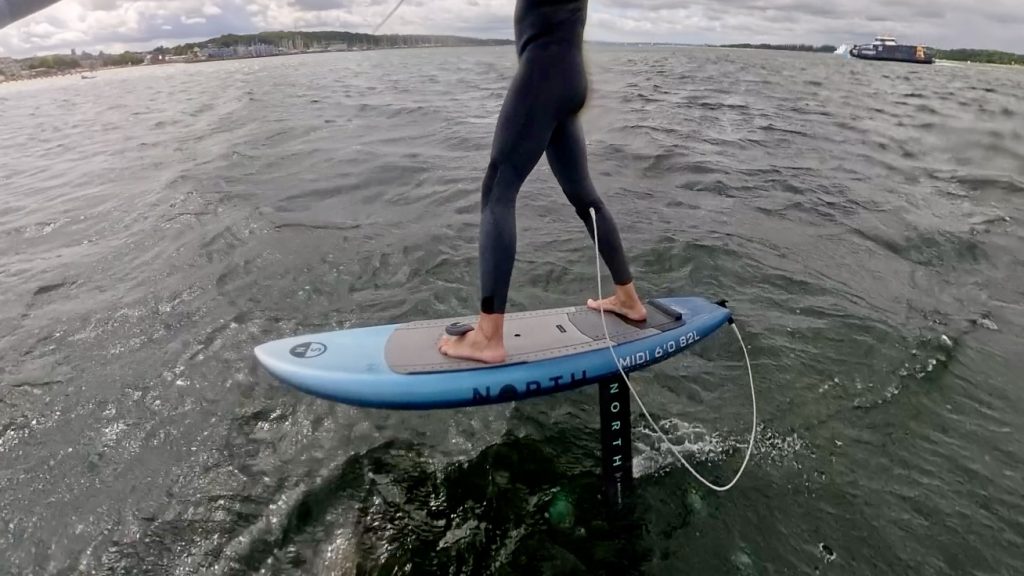
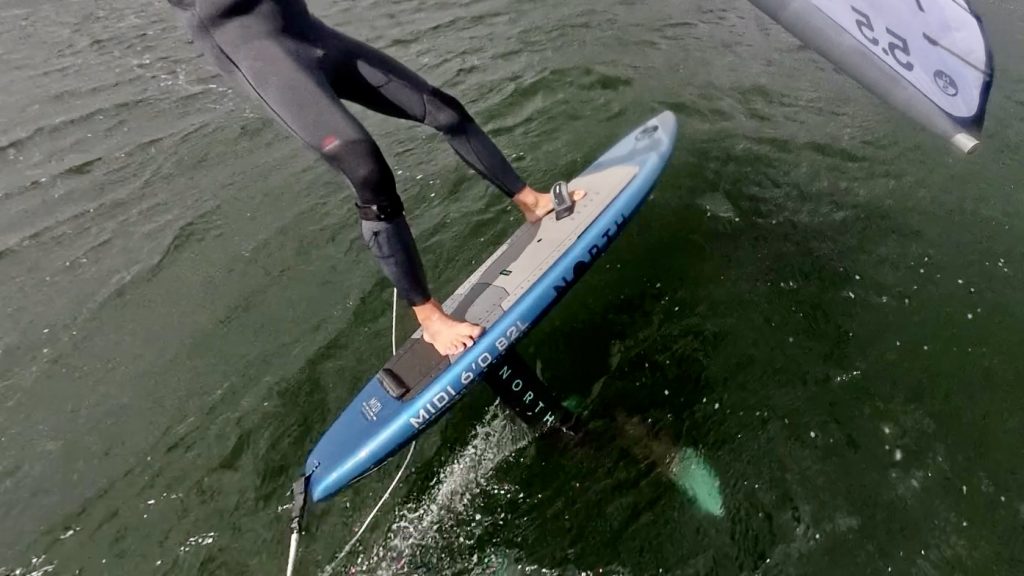
You also benefit from the perceived compactness when jibing and (light) jumping. The board willingly follows the foot commands, the swing mass feels low. Touchdowns rarely happen because of the good stability on the foil. If they do, the Midi reacts very forgivingly. Instead of tilting violently, it usually skips straight back up and you can continue your ride.
The Midi also shows its strengths in top-end performance. Thanks to the narrow shape, the wind has little surface area to attack the board, which ensures control in strong winds. In our tests in gusty winds of up to 30 knots, it never felt like the board was “taking off” or becoming uncontrollable – you remain in control of the situation. This helps when riding upwind (cruising): The board provides hardly any lateral resistance in the water, so you can run height well. Overall, the Midi conveys a direct, sporty feeling on the foil. It is less inherently stable than wide-bellied boards – but that is exactly what advanced wingfoilers will appreciate, as it means more feedback and freedom of movement underfoot.
Field of application
North positions the Midi as a “crossover board ” – and we have indeed found it to be very versatile. In freeride, its planing nature makes it fun even in gusty winds: you can get out early and enjoy long rides without the board feeling sluggish. We see a lot of potential in the waves, even if we could only test it behind the boat: The board rides very surf-oriented, you can dare to make tight turns without being slowed down by the board. Downwind runs should also be an interesting field for the Midi. Our 82 L test board is definitely too small for SUP foil downwinding (i.e. without a wing, only paddled) – the larger models or specialized downwind boards such as North’s Horizon would probably be more suitable here. On the other hand, the Midi should show its advantages in the wing downwinder (riding downwind with wing in hand): The board can be steered well and pumped in between to connect individual waves. The long waterline and nose-up shape prevent the board from peaking when riding downwind. According to North, the Midi is also compatible with Foil-Drive electric motors (thanks to a special 2.4 GHz signal feed-through in the carbon laminate). We weren’t able to carry out an e-test due to a lack of time, but this information shows: The board should actually be able to do everything – from wing foiling and prone surfing to motor-assisted downwind foiling. In smaller sizes it can be a thoroughbred prone foil board, in larger sizes a lightwind wingboard. This versatility is a big plus of the Midi concept. In our eyes, North’s slogan of the “all-in-one” board certainly applies.
Conclusion
All in all, the North Midi 2025 in the 6’0”/82 L version really impressed us. The Midi combines early planing, high glide efficiency and maneuverability in one board. Advanced riders in particular will enjoy it, as it opens up new possibilities: With a single board, you can freeride in a relaxed manner, rip in small waves and also tackle the occasional downwinder or foil-drive excursion. The quality of the material is outstanding; the board can handle even the roughest of rides without being bitchy. Of course, there are a few compromises: When stationary and during light wind starts, the narrow, thick board demands active cooperation – it’s definitely not the first choice for beginners. However, those who are already confident foiling and want to take the next step will find the Midi a companion with a strong character. The target group is therefore ambitious wingfoilers (intermediate to expert) who are looking for a versatile board with performance DNA. For them, the North Midi delivers exactly that: a lively, light-footed ride with that certain surf touch. And all this without forgetting the practical side – from the carrying handle to strap compatibility, everything is on board.



